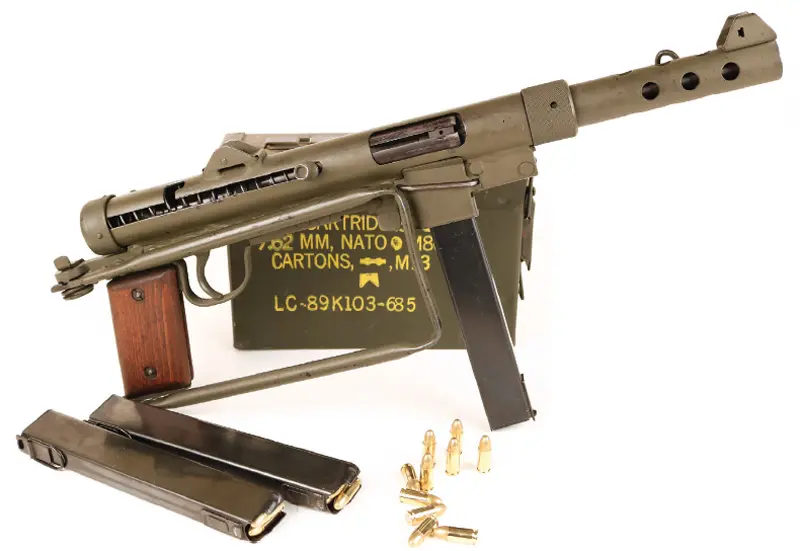
On 30 January 1968, the Viet Cong, with massive North Vietnamese Army support, launched the largest offensive yet undertaken during the Vietnam War. Ultimately 80,000 communist troops struck more than 100 South Vietnamese towns and cities. The attack included 36 of 44 provincial capitals, 72 of 245 district towns, and five of six autonomous cities as well as the southern capital of Saigon. As this attack coincided with the Vietnamese New Year, it became known as the Tet Offensive.
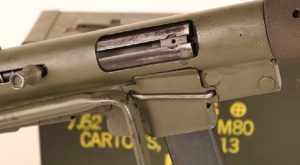
While chaos briefly reigned in the aftermath of this remarkably successful coordinated surprise attack, South Vietnamese and U.S. forces quickly regrouped and beat back the communists. Intense fighting went on in many places for more than a month, and the North Vietnamese forces suffered enormous casualties. But on the battlefield that mattered the most—the American living room—enthusiasm for the war began to falter.
Beginning with the Tet Offensive, quiet voices opposing the war in Southeast Asia grew steadily louder, until the U.S. ultimately pulled out and allowed the communists to overrun the country.
Table of Contents
WAR STORY
On 31 January 1968, the day after the launch of the Tet Offensive, two battalions of Viet Cong successfully seized the South Vietnamese provincial capital of Chau Phu. This offensive fragmented South Vietnamese defenses, cutting off friendly units as well as allied civilian personnel throughout the city.
Staff Sergeant Drew Dix was assigned nearby as a Special Forces advisor. When SSG Dix learned that several friendlies, including an American nurse, were trapped in a house in the city center, he stuffed his pockets with spare magazines and headed off with his Swedish K submachine gun leading a relief force.
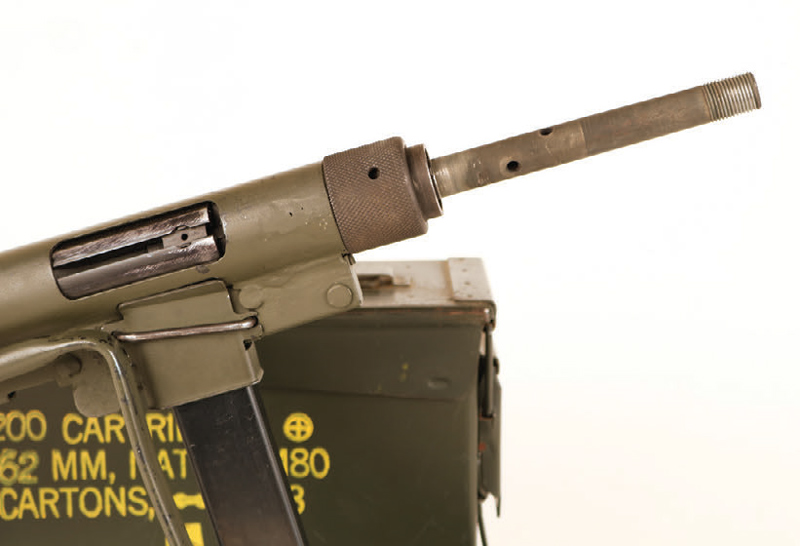
Two days later, SSG Dix had killed between 14 and 25 Viet Cong, captured another 40, and rescued 24 civilians. For this he earned the nation’s highest award for valor, the Medal of Honor.
The presentation of this award at the White House by President Lyndon Johnson on 19 January 1969 was one of this controversial President’s last official acts as Commander in Chief. SSG Dix was the first enlisted Special Forces soldier to earn the Medal of Honor. The awkward-looking submachine gun SSG Dix used to successfully undertake this remarkable feat of arms followed an unusual path from Sweden to the sweltering jungles of Vietnam.
THE SWEDISH K
The Swedish K was officially known as the Kulsprutepistol m/45 and was the right gun at the wrong time. Developed in the aftermath of World War II and introduced in 1945, the Swedish K entered a world already awash in surplus submachine guns. The Swedish K was alternately known as the Carl Gustav M/45. American users frequently called it the K rifle.
The Swedish K was a simple enough gun originally designed by Gunnar Johnsson and produced at the Carl Gustafs Stads Gevärsfaktori in Eskilstuna, Sweden. The Swedish K served as the standard Swedish submachine gun from 1945 to 1965. The Swedish Home Guard did not retire the weapon until 2007.
The Swedish K represented the pinnacle of second-generation SMG design. Built around a pressed steel receiver and incorporating a minimum number of machined parts, the Swedish K was cheap to build. Drawing on production techniques pioneered in the German MP40 and British Sten, as well as the Russian PPS-43 and PPSh- 41, the Swedish K was a robust and reliable combat weapon.
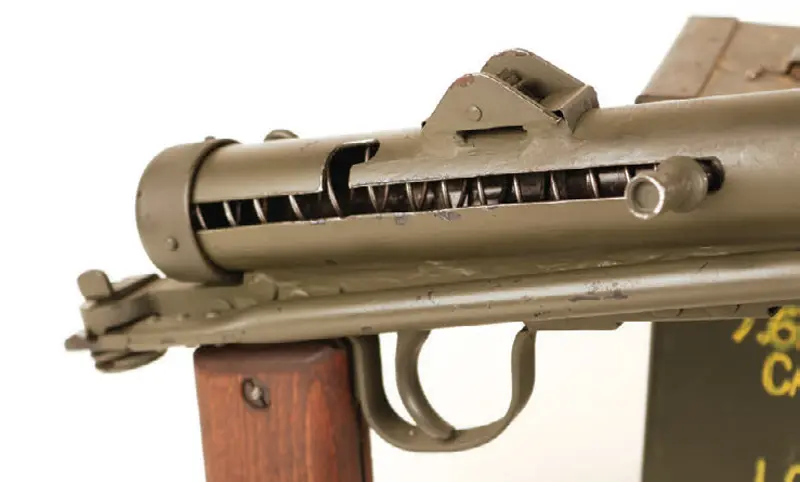
FOREIGN USERS
The Egyptians produced the Swedish K under license, calling it the Port Said. It is essentially identical to the Swedish gun. A later, simplified version called the Akaba had a shorter barrel, simple sliding wire stock, and no barrel shroud.
In an odd turn of events, the United States found itself in need of a pistolcaliber 9mm submachine gun as it ramped up for operations in Southeast Asia in the early 1960s. Navy SEALs in particular appreciated the gun’s overthe- beach capabilities.
The Swedish K had such loose tolerances that it could be expected to operate reliably immediately after emerging from protracted immersion in salt water. The American CIA and Special Forces also made extensive use of the weapon.
Swedish objections to American involvement in the Vietnam War resulted in suspension of contracts to supply the gun to American users in 1966. A subsequent request on behalf of the SEALs to American industry for a replacement resulted in the relatively short-lived Smith & Wesson M76. However, the SEALs lost interest in the submachine gun in favor of compact rifle-caliber weapons, and the M76 died a natural death.
Some of the early Swedish K guns could be found without any identifying markings at all, intended for covert clandestine use.
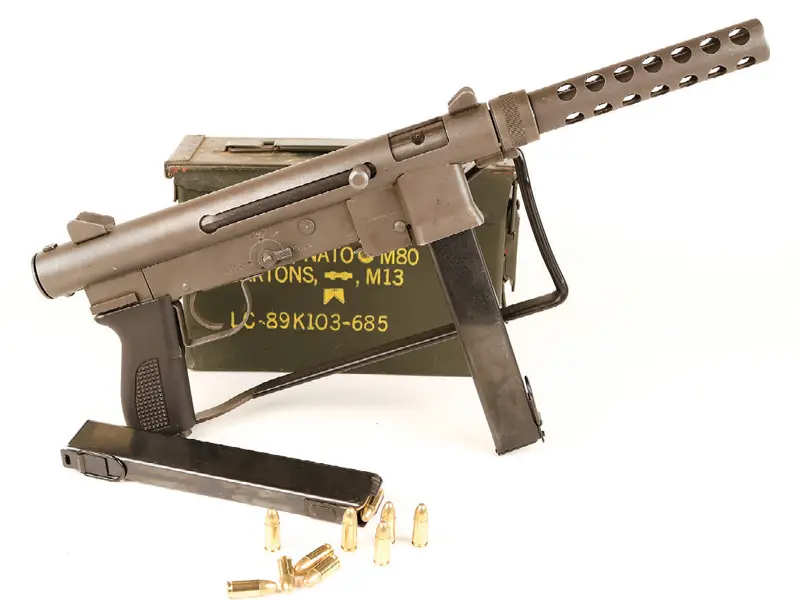
PERTINENT PARTICULARS
Despite its conventional design, the Swedish K did have some unusual features. The gun fires from an open bolt via advanced primer ignition, and sports an unusually slow rate of fire. This rate is published in open sources to be around 600 rounds per minute, but my gun cycles a bit slower with standard-velocity ammunition.
The gun feeds from a splendid double-stack 36-round box magazine. About 300,000 weapons were made during its production run. The heavy pressed-steel stock locks positively in both the open and closed positions, and it is more effective than most as a result. Both the front and rear sights are heavily fenced.
One of the most unusual features of the Swedish K is its magazine well. By removing a heavy wire retainer clip, the magazine well may be separated from the gun to allow use of wide 50-round coffin magazines or even 71-round drums. While the appeal of 71 rounds onboard is undeniable, the resulting gun is awkward to maneuver and unduly heavy. Most later guns had the magazine well permanently riveted in place.
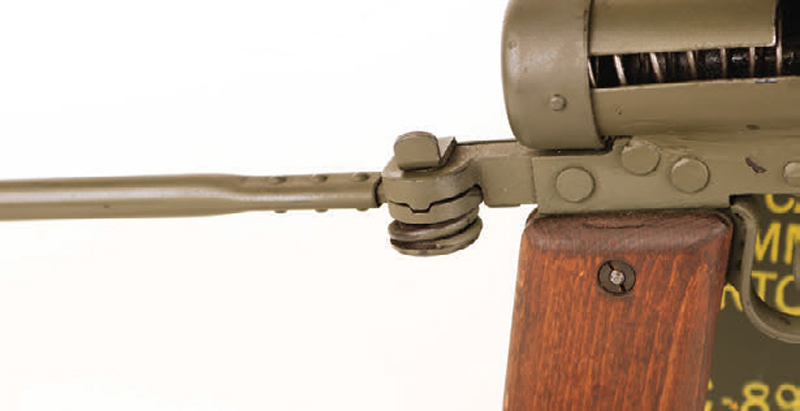
The Swedish K is full-auto only and has no safety beyond a slot in which to lock the bolt to the rear. The guns were finished in a characteristic grey-green lacquer finish. The barrel and barrel sleeve are easily removable, and a suppressor unit can be installed in moments without tools. American Special Operations soldiers serving in Vietnam particularly prized the sound-suppressed version.
HOW DOES SHE RUN?
The pistol grip, like that of the American M3 Grease Gun, was apparently designed for some Scandinavian ice giant. I have big hands, and the grip still seems too large. Uninspired wooden grip panels give the gun a crude appearance. The release mechanism for the folding stock demands that a catch be pressed while the stock is simultaneously disengaged and rotated closed. This maneuver seems like it requires three hands until you have practiced it a bit. The stock opens freely with a tug.
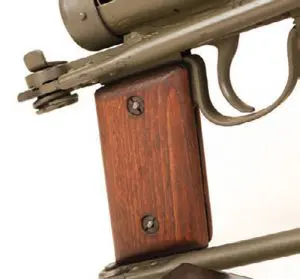
To fire the weapon, simply pull the bolt to the rear until it engages the sear and inserts a loaded magazine. The rest is just aim and squeeze. The slow rate of fire, combined with the gun’s prodigious weight, make it remarkably controllable. When fired from either the shoulder or the hip, the Swedish K is a steady and effective platform.
A good friend suggested I give this a whirl: The Swedish K actually shoots faster when pointed downward than when elevated! This is intuitive, I suppose. Physics dictates that the force of gravity would assist the action in a nose-low attitude and retard it when the muzzle is lifted upward.
The effect can be surprisingly pronounced at sharp angles. There is likely no tactical application to this, but it is interesting. Everything in life can be expressed in terms of physics.
Swedish troops who grew weary of the sedate rate of fire found that they could insert a flashlight battery into the rear portion of the gun behind the bolt and substantially speed up the weapon. I personally feel that slower is better when it comes to submachine guns, so I don’t see much point in that myself. I have owned my beat-up Swedish K for about seven years and have put a couple thousand rounds through the gun without a failure. I plan to clean it someday, but haven’t gotten around to it just yet.
Though my custom sound suppressor for the Swedish K incorporates a ported barrel that drops the typically supersonic rounds down below the speed of sound, it is still tough to suppress the zippy little 9mm. I tried a decent burst without muffs and regretted it for several days.
When I’m sitting off in the corner of the nursing home someday with no friends because I can’t hear well enough to carry on a conversation, we’ll all know where it started.
MUSINGS
The Swedish K was a robust and effective submachine gun that came along just as submachine guns were passing their prime. The K earned some combat credibility in Vietnam, not so much because it was a phenomenal weapon, but rather because it was reliable and available. But in the hands of a determined operator like Drew Dix, it was obviously a formidable tactical tool.
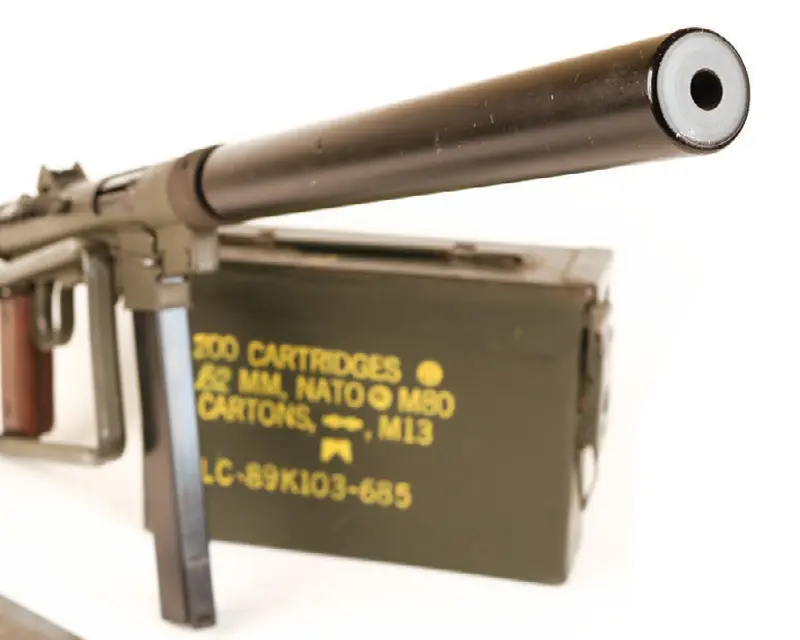
Nowadays, rifle-caliber carbines have all but displaced pistol-caliber submachine guns in the armories of most military forces. The Swedish K still shows up from time to time in Africa and the Middle East, but its day in the sun has passed.
But with generous tolerances and a superb 36-round magazine, the argument could be made that the Swedish K represented the state of the art in its era. Running the old girl on the range reminds me of why everybody in Vietnam wanted one.
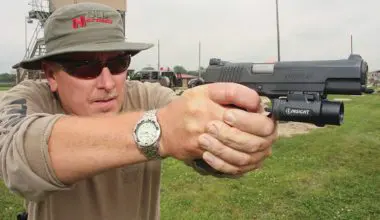
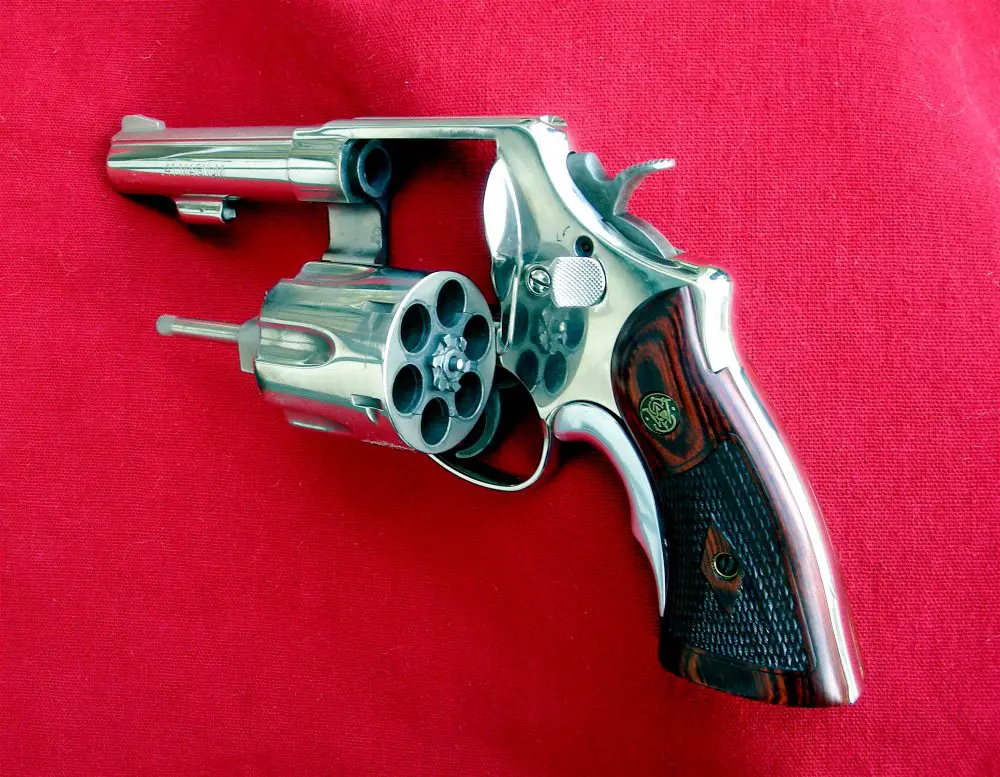
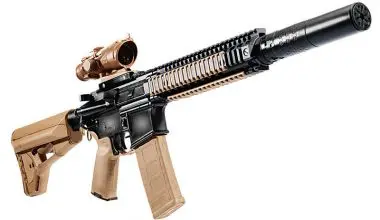
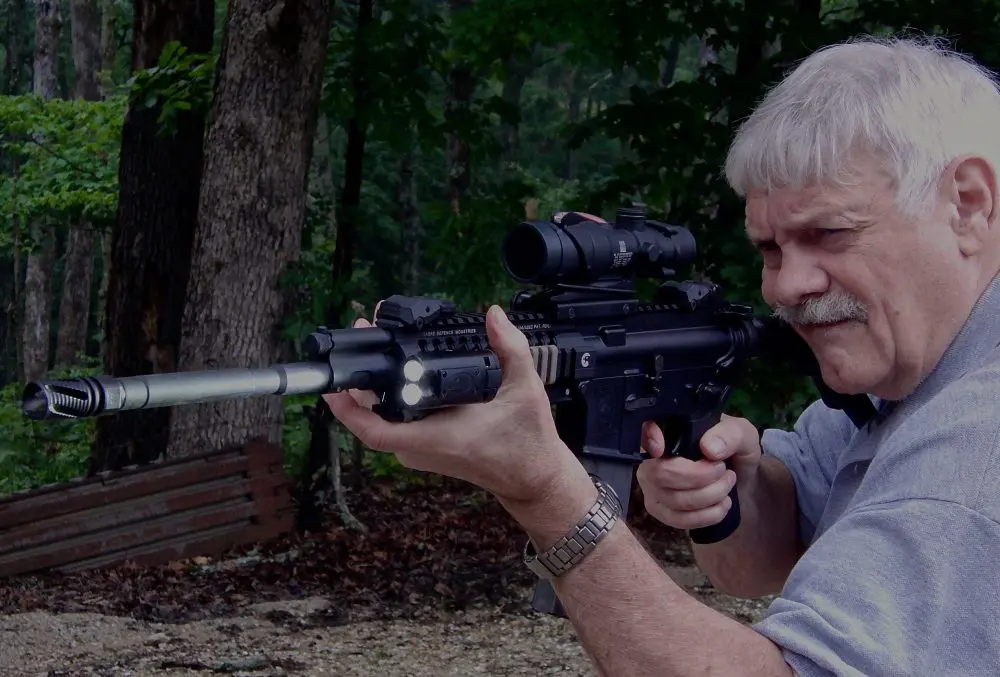
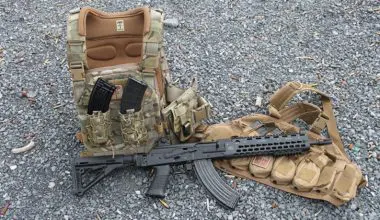
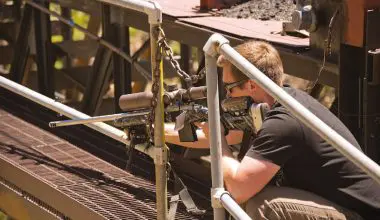
1 comment
hi, i need a value for a swedish k submachine gun …can you help me?